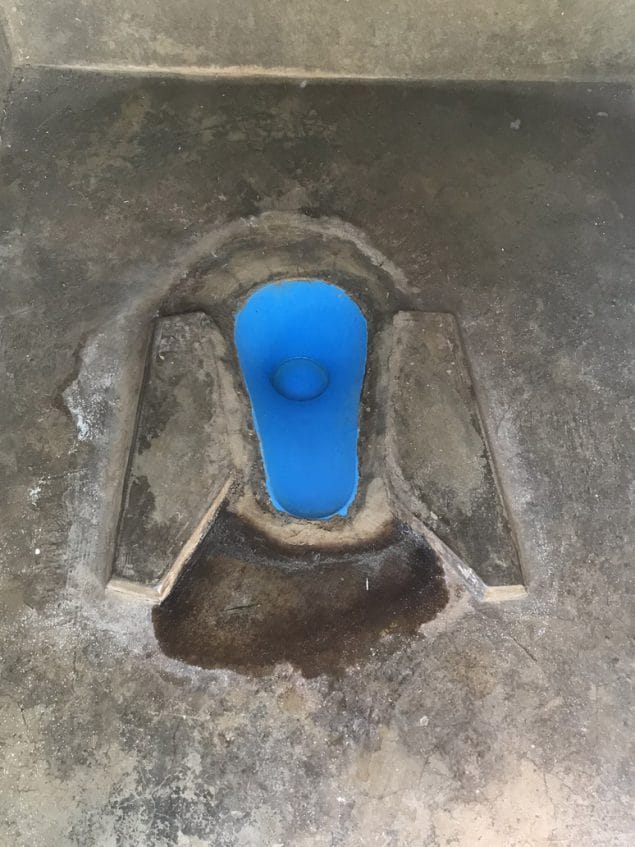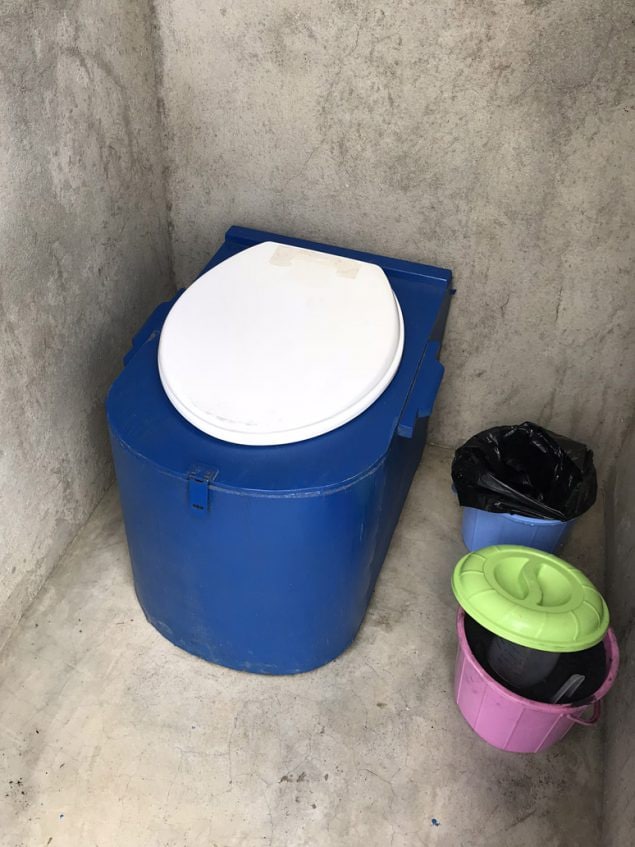What to know
CDC collaborates with partners to assess new water, sanitation, and hygiene (WASH) solutions in healthcare facilities, particularly in areas with limited resources. Poor WASH conditions in healthcare facilities increase the risk of infections. Innovative or modified strategies are often needed to tailor community WASH approaches to healthcare settings.

Novel latrines

Little work has been done to improve sanitation in healthcare facilities in areas with limited resources, including short-term improvements to benefit users' experiences. In Kenya, CDC worked with the non-governmental organization Safe Water and AIDS Project and the County Health Office of Kisumu County on a field project involving fiberglass inserts with self-closing covers mounted into latrine dropholes. The inserts are designed to reduce odors and flies and can be emptied by pouring water into the pan, making them easier to clean.
The goal of the project was to understand whether the inserts improved the experience of using the latrine by assessing people's perceptions of odor and cleanliness, measuring the number of flies in the latrines before and after installation, and interviewing cleaners about the effect of the new latrine inserts on their daily work.
Container-based sanitation

While toilets with onsite waste containment like septic tanks and pit latrines are common in healthcare facilities in settings with limited resources, they are typically located outside the area where patients are cared for and require users to be mobile enough to reach them.
CDC collaborated with Sanivation, a non-governmental organization, to evaluate the feasibility and acceptability of container-based toilets in outpatient and inpatient wards. Container-based toilets are mobile and can be easily moved. The toilets also are raised, making them easier to use for people hospitalized with injuries or illnesses that prevent them from squatting. Container-based toilets are covered to contain odors and can be serviced more regularly and managed more safely than traditional bedpans.
Although sustainable container-based sanitation projects for households already exist in Ghana, Haiti, Kenya, and other resource-limited settings, this was the first set of evaluations in healthcare facilities in Kenya. The evaluation project aimed to help understand whether this technology was appropriate for healthcare facilities.
Making hand rub locally

Alcohol-based hand rub (ABHR) is an established method for clinical hand hygiene in healthcare settings. In Uganda, CDC has collaborated with the Infectious Diseases Institute, the Kabarole District Health Office, and the International Water and Sanitation Centre to understand whether ABHR can be produced and distributed on a local scale in areas with limited resources.
Starting in 2018, CDC began evaluating a project in Uganda to test the feasibility, acceptability, and effectiveness of local production and districtwide distribution of ABHR at improving hand hygiene among healthcare providers.
